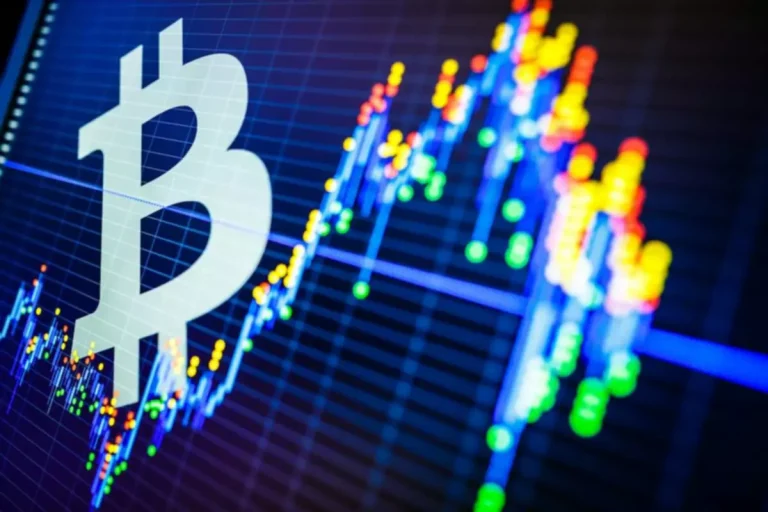Hence stablecoin or wrapped token pairs, as nicely as other token pairs with comparable values, operate well with AMMs versus these with bigger ratio gaps. Impermanent loss is usually insignificant if the price ratio between token pairs remains inside a modest range. This can emphasize some great advantages of each model whereas minimizing the disadvantages. For instance, a mix of CPMM and CSMM ensures infinite liquidity whereas lowering worth slippage dangers. When there are three or extra tokens in a pool, it’s best to make use of the constant imply mannequin; the constant is the geometric mean of the product of the portions of the variety of tokens in the pool. Each day Shrimpy executes over 200,000 automated trades on behalf of our investor neighborhood.
Uniswap, Sushi, Balancer, and Curve Finance are a few top crypto decentralized exchanges using the AMM model to deliver DeFi to the lots. Anyone can be a part of a liquidity pool – all you want is a self-custody pockets and possession of any suitable tokens. Users are incentivized to lock their tokens in liquidity pools by getting paid out a share of the buying and selling charges generated by that tool, proportional to how a lot they’ve contributed. Hybrid CFMMs enable extraordinarily low price impact trades by using an trade price curve that is principally linear and becomes parabolic only once the liquidity pool is pushed to its limits.
Mục Lục Bài Viết
Constant Product Method
As lengthy as you don’t withdraw deposited tokens at a time that the pool is experiencing a shift in worth ratio, it’s nonetheless attainable to mitigate this loss. The loss disappears when the costs of the tokens revert to the unique value at which they were deposited. Those who withdraw funds earlier than the prices revert undergo everlasting losses. Nonetheless, it’s possible for the income acquired by way of transaction fees to cowl such losses.
An AMM’s major objective is to guarantee that users can at all times trade cryptocurrency, even within the absence of counterparties with matching presents. Because of this, AMMs do not depend on order books to set up trading pairs. Instead, they use smart contracts to handle distinctive crypto asset swimming pools created particularly to provide the liquidity required to assist frictionless trading. In all different variations of CFMM, liquidity providers provide belongings which are pooled in an open good contract. A trading pair includes two or extra complimentary swimming pools of crypto property or tokens. Also aiming to extend liquidity on its protocol, DODO is using a mannequin generally known as a proactive market maker (PMM) that mimics the human market-making behaviors of a standard central limit order e-book.

Automated market makers (AMMs) are a kind of algorithm built on blockchain expertise that automates the method of executing trades on decentralized exchanges. AMMs are an important aspect of the growing decentralized finance ecosystem and are an innovation that reflects the core beliefs of crypto. Because AMMs are constructed on blockchains and utilize good contracts, trades can be carried amm in crypto out at any time, in a permissionless method, and for a lot lower charges than on a traditional change. When somebody desires to buy or sell an asset on a decentralized exchange, they simply submit the commerce to the sensible contract and it’ll be routinely executed at whatever the current market value is.
Liquidity Pools And Liquidity Providers
They’re extra accessible, less expensive, and much more environment friendly than traditional cryptocurrency platforms. This has seen the concept achieve main traction as more buyers search to transact in a steady and sanction-free surroundings. Over the last couple of years, AMMs have confirmed to be revolutionary methods for enabling decentralized exchanges. In this time, we now have witnessed the emergence of a slew of DEXs that are driving the continuing DeFi hype.
Yield farming is a well-liked decentralized financial instrument in DeFi that yields capital by extracting worth from offering liquidity to decentralized exchanges. Market makers are entities tasked with offering liquidity for a tradable asset on an exchange that will otherwise be illiquid. Market makers do this by shopping for and promoting belongings from their own accounts with the goal of making a profit, usually from the spread—the gap between the best buy provide and lowest sell provide. Their trading exercise creates liquidity, lowering the price impression of bigger trades. In this constant state of steadiness, shopping for one ETH brings the worth of ETH up slightly along the curve, and selling one ETH brings the price of ETH down slightly alongside the curve. It doesn’t matter how unstable the value will get, there will finally be a return to a state of stability that reflects a relatively accurate market value.
Understanding Liquidity And Its Function In Amms:
As such, most liquidity will never be used by rational merchants because of the excessive value impression skilled. The costs of belongings on an AMM mechanically change depending on the demand. For example, a liquidity pool might maintain ten million dollars of ETH and ten million dollars of USDC.
- With centralized exchanges, a purchaser can see all the asks, such as the costs at which sellers are willing to sell a given cryptocurrency.
- On the other hand, AMM facilitates the buying and selling of crypto assets with out the necessity for a counterparty.
- AMMs use liquidity pools, the place customers can deposit cryptocurrencies to supply liquidity.
- Smart contracts cannot be interfered with when fulfilling these circumstances.
- An AMM’s main goal is to guarantee that customers can always trade cryptocurrency, even in the absence of counterparties with matching provides.
They additionally offer a variety of buying and selling pairs, order sorts, and advanced trading tools and features, which makes them extra appropriate for skilled traders and high-volume traders. One of the benefits of utilizing liquidity swimming pools is that it would not require a buyer and seller to facilitate a commerce. With liquidity swimming pools, a purchaser can enter a buy order for a given worth utilizing pre-funded liquidity swimming pools. Automated market makers work with liquidity swimming pools, which are essentially crowdsourced funds for every buying and selling pair.
These operate on the principle that the combined reserves of asset pairs in buying and selling must remain fixed. In these non-custodial AMMs, consumer deposits are aggregated inside a smart contract, providing liquidity for token swaps. Users commerce against this sensible contract (the pooled assets), instead of immediately with a counterparty, as seen in traditional order guide exchanges. An Automated Market Maker (AMM) is a vital part of the Decentralized Finance (DeFi) panorama.
The most widespread in recent occasions is the automated market maker used by Uniswap, Balancer, or Curve. Others include constant product market maker CPMM), constant sum market maker (CSMM), and fixed mean market maker (CMMM). As its name implies, market making connotes the method involved in defining the prices of belongings and simultaneously offering liquidity to the market. In other words, a market maker does create liquidity for a monetary asset.

In flip for offering this liquidity, providers get community charges from all buying and selling activity taking place within their liquidity pool. It’s considered one of a quantity of ways bitcoin owners can use their holdings to generate passive earnings. It should be famous that in conventional exchanges, the position of a liquidity supplier is just open to Businesses or the prosperous. However, with AMMs, any entity that satisfies the conditions programmed into the good contract is eligible to turn into a liquidity provider.
What Is Automated Market Maker?
Concentrated liquidity is amongst the newest developments in AMM development. In fact, it is considered one of the hallmarks of the newest version of Uniswap, v3. This explicit function is intended to increase the effectiveness of the price-adjusting process, reduce slippage, and enable liquidity providers to cost bigger fees.
Many of first-generation AMMs are restricted by impermanent loss and low capital effectivity, which impacts both liquidity providers and merchants. In Vitalik Buterin’s original submit calling for automated or on-chain money markets, he emphasised that AMMs shouldn’t be the one available possibility for decentralized buying and selling. Instead, there needed to be many ways to commerce tokens, since non-AMM exchanges have been vital to maintaining AMM costs correct. What he didn’t foresee, however, was the development of various approaches to AMMs.
The end-point is to retain the same worth for the entire liquidity in a pool. This is achieved by decreasing the worth of one asset and growing the other to ensure equilibrium. AMMs like the fixed product market marker (CPMM) of Uniswap V2 or Balancer operate utilizing this technique. AMMs cost a small fee for every transaction, but it’s often a fraction of the trade.

